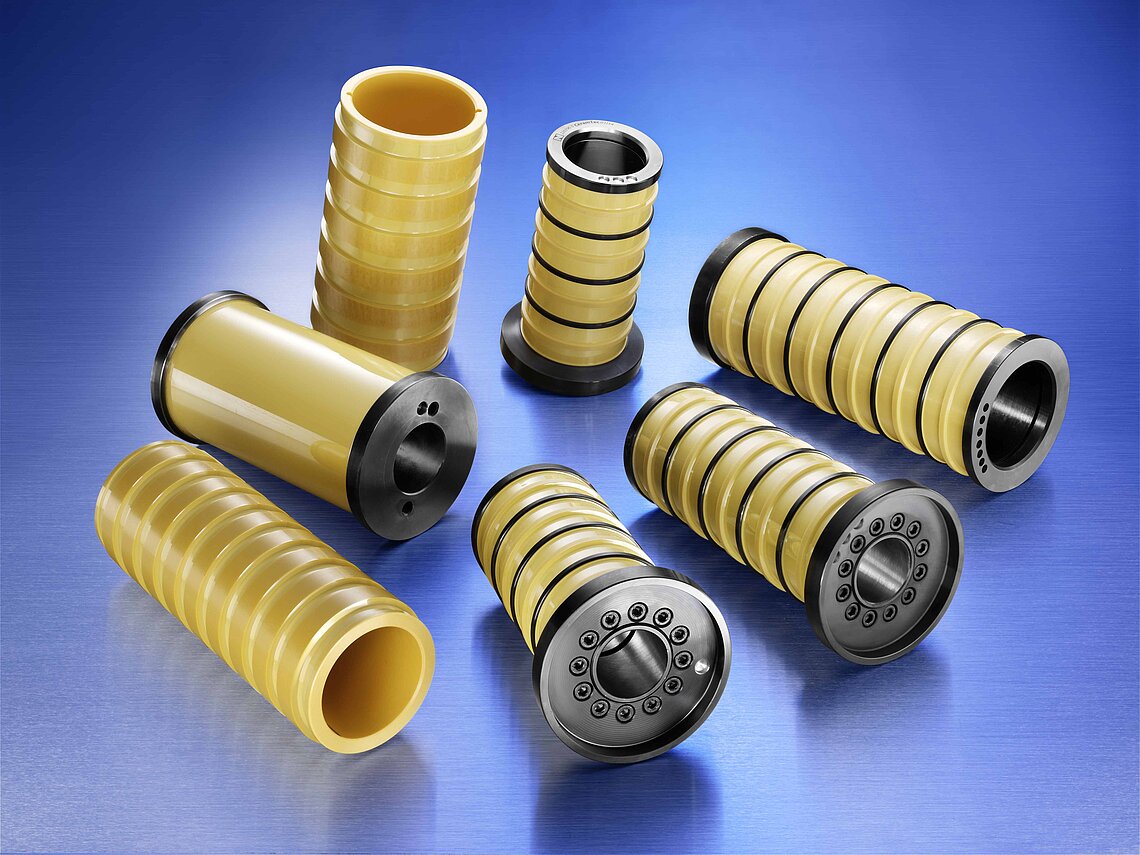Why advanced ceramics tools are indispensable for wire drawing
Wire drawing is one of the earliest industrial applications for alumina ceramics, dating back to the early 1960s, and the highly resistant materials guarantees the best wire quality. CeramTec has more than 60 years of expertise in producing ceramic rollers and drawing cones for wire drawing. The material properties are permanently adapted to the increasing requirements and to that end, CeramTec operates with a specifically developed test centre to scientifically analyse interactions. The result of this rigorous testing and developing are long service lives and significantly extended machine running times.
The production of copper wires of various diameters starts with a wire rod which has a diameter of 8 mm. Wire drawing machines pull the soft material over drawing tools until the desired end thickness of the wire is achieved. This can range from 4.5 mm wires to the thinnest ones with a diameter of 0.025 mm.
In this process, the wire is guided like the rope of a hoist through the different rollers or cones, thereby transferring the extreme tensile force which is required for forming onto the wire. These forces put high levels of stress on the drawing tools, and technical ceramics such as alumina and zirconium oxide are particularly well suited due to their mechanical strength, thermal stability and chemical resistance, resulting in very good wire quality.
Ceramic materials matched to wire type
Zirconium oxide, typically of a dark yellow colour, is generally used for non-ferrous metal wires, respectively precious metals. Ceramic components include, among others, caps, cones and guide elements in wire drawing machines for copper wires, coated wires and special steel wires. The material is also used in the pipe calibration process after welding. The white alumina is harder than zirconium oxide and is used for the production of particularly small diameters or for wires made of special materials such as nickel, tungsten or stainless steel.
“The drawing rollers and drawing cones are matched precisely to the requirements of the wire to be produced. This involves defining the exact grain size for the ceramic materials used.”
Rainer Scherzinger, Sales Manager Machinery at CeramTec
“The drawing rollers and drawing cones are matched precisely to the requirements of the wire to be produced. This involves defining the exact grain size for the ceramic materials used,” says Rainer Scherzinger, Sales Manager Machinery at CeramTec. “Using our specifically developed testing equipment, we also scientifically analyse the interaction between the surface and material of the drawing tools, wire materials and coatings as well as lubricants. The results feed directly into our ongoing product development.”
Drawing rollers and cones made of ceramic or ceramic steel composites
Depending on the specifications, the surface of the forming rings is first ground with diamond tools. After assembly in the machine, diamond polishing is carried out, which gives the ceramic surface a so-called cobblestone pattern, which significantly increases the contact area and ensures, among others, a constant torque. As a result, the wire runs smoothly through the individual steps, is given a uniform diameter and is protected against surface damage or breakage. If lubricant is used, uniform adhesion is also ensured.
CeramTec drawing tools consist either completely of ceramic or, in a more cost-effective alternative, of a ceramic steel composite, where ceramic is only used in the wear area. This allows the ceramic rings to be replaced in composite solutions.
CeramTec’s product portfolio also includes auxiliary tools for wire manufacturing, such as guide rolls and guide elements made from zirconium oxide and silicon nitride; ceramic inlet nozzles and guide nozzles, adjustable guides, eyelets and various guide plates.
